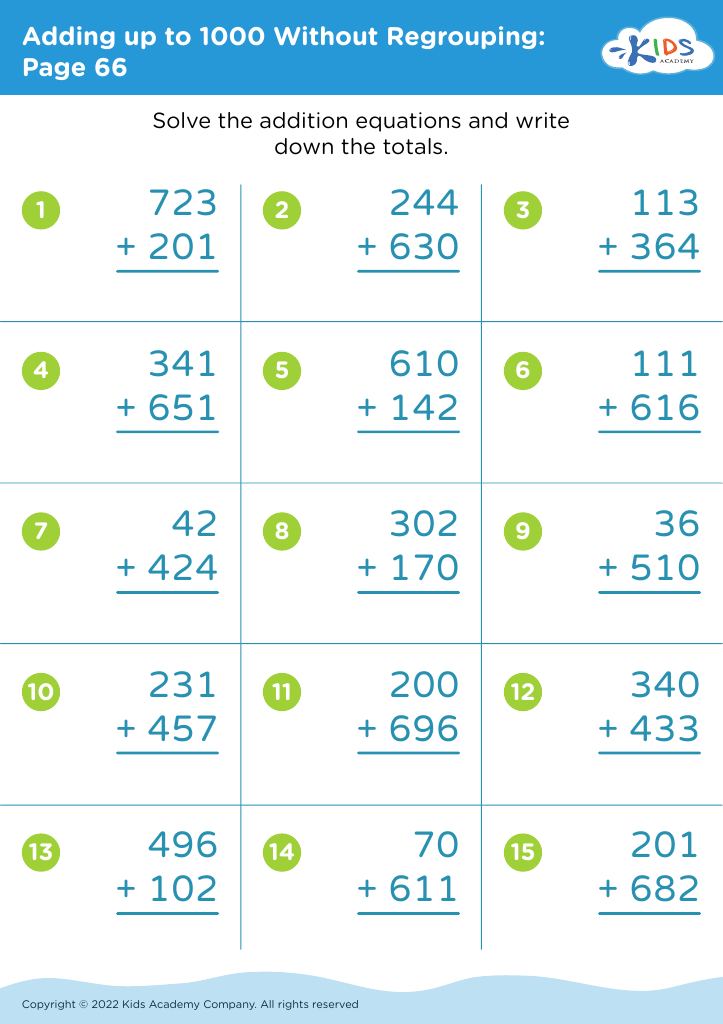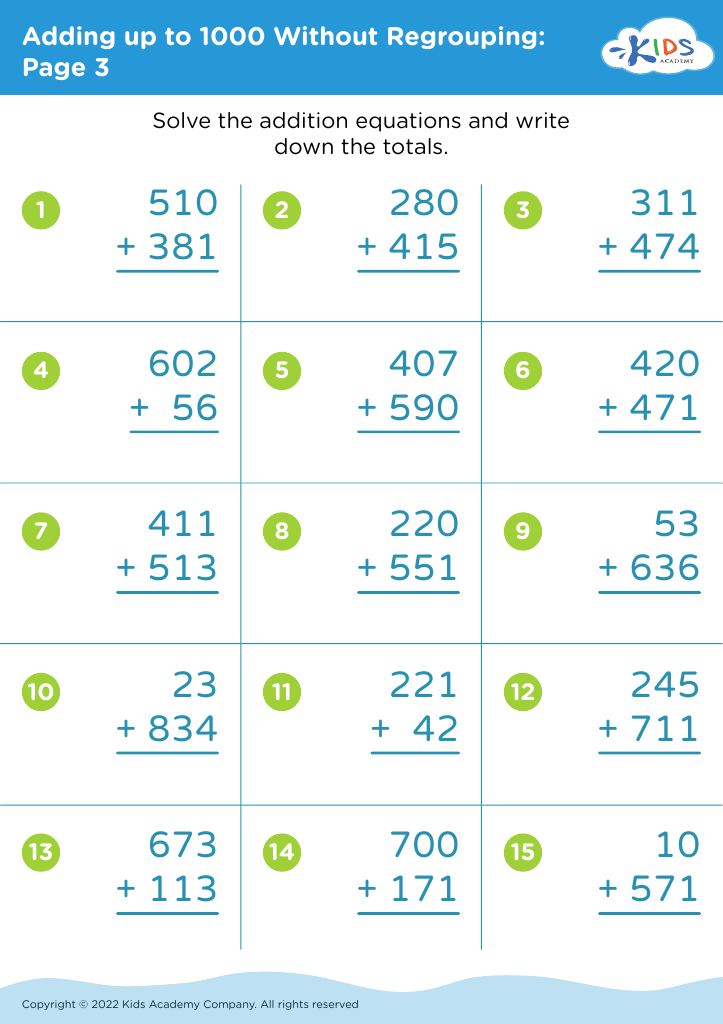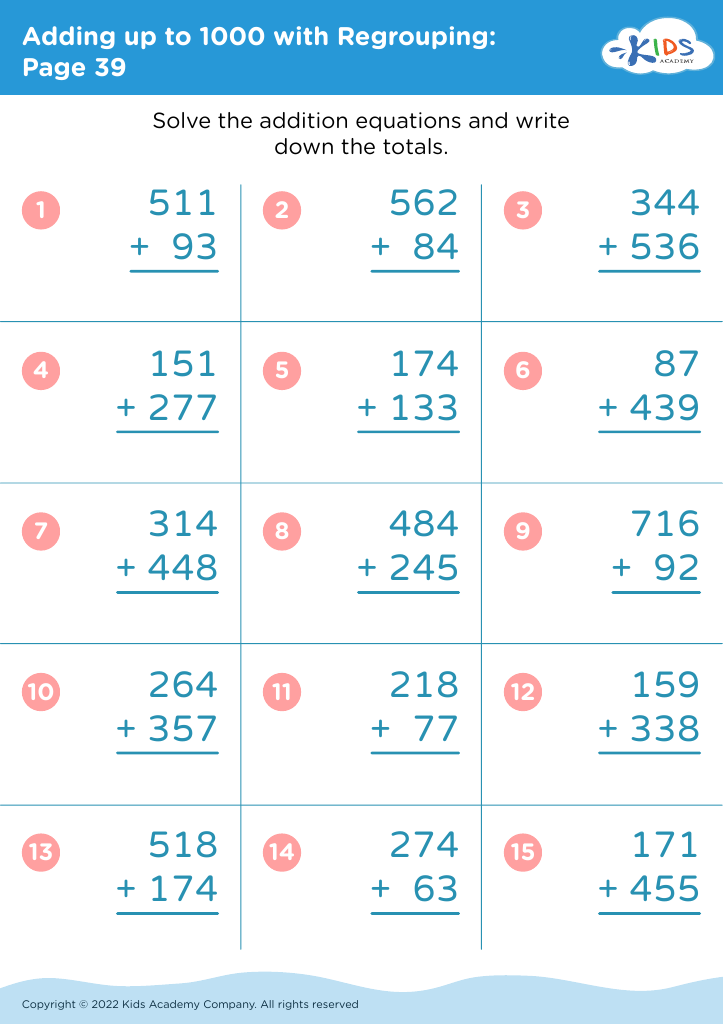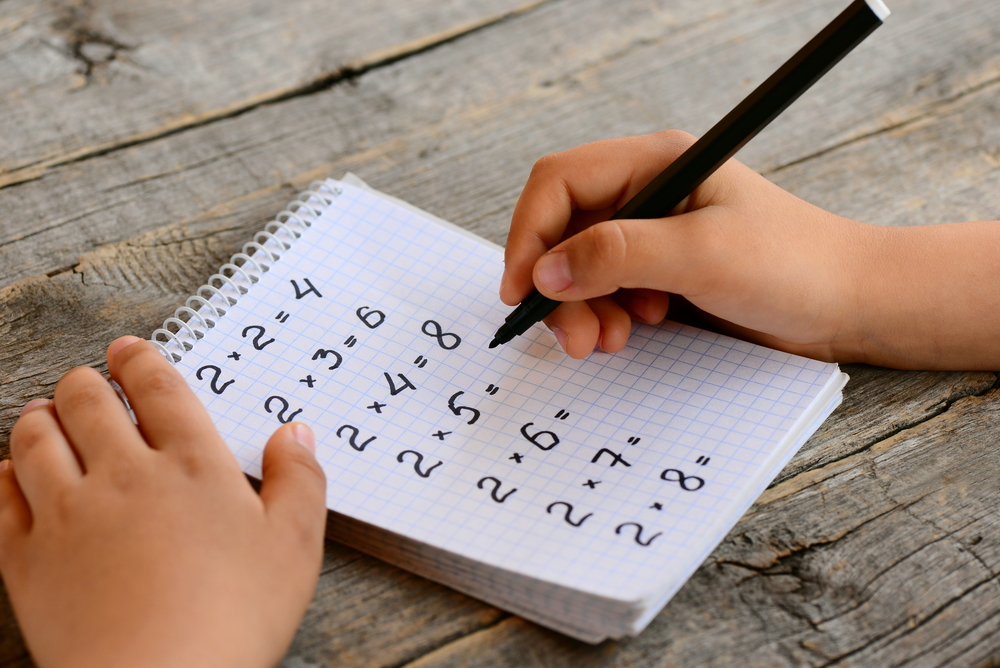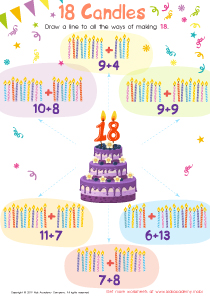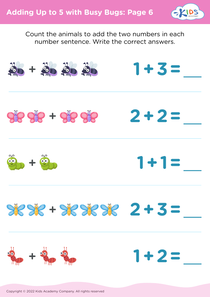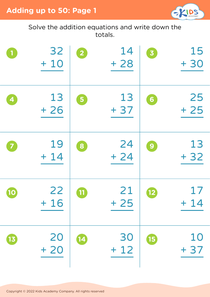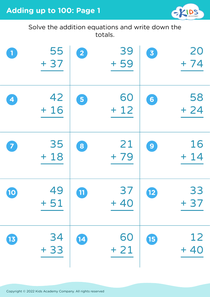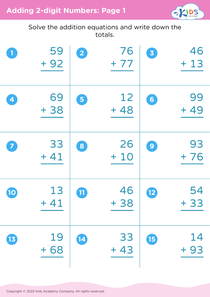Recognize shapes Adding up to 1000 Worksheets for Ages 5-8
4 filtered results
-
From - To
Explore our "Recognize Shapes Adding up to 1000 Worksheets" designed for children ages 5-8! These engaging, printable worksheets help young learners develop crucial math skills by combining shape recognition with addition. Ideal for both classroom and at-home learning, our resources feature colorful visuals and interactive exercises that make learning fun and effective. By recognizing various shapes and integrating them into addition problems, students will enhance their cognitive abilities while gaining confidence in their math skills. Strengthen your child's foundational knowledge with these exciting worksheets that foster creativity and critical thinking. Perfect for adventurous little learners eager to discover the world of shapes and numbers!
Recognizing shapes and understanding the concept of addition up to 1000 are essential skills for children aged 5-8, playing a significant role in their cognitive development and mathematical foundation.
First, shape recognition helps children understand the world around them. It enhances their spatial awareness, critical thinking, and problem-solving abilities. By identifying different shapes, children can make connections between objects, fostering creativity and encouraging them to explore geometric concepts early on.
Addition, especially totaling to 1000, introduces kids to the principle of numerical relationships. Mastering basic addition builds fluency in arithmetic, crucial in everyday situations beyond the classroom. It nurtures mental math skills, enabling children to calculate and estimate effectively.
Furthermore, the integration of recognizing shapes with addition can make learning more engaging and interactive. Using visual aids and practical activities, such as counting and sorting shapes, captivates learners' attention and makes abstract concepts more tangible.
In essence, investing time in teaching these skills ensures a solid foundational knowledge for future learning. When parents and teachers prioritize recognition of shapes and addition, they empower children to become confident and capable learners, transforming mathematics into a fun and essential part of their everyday lives.

